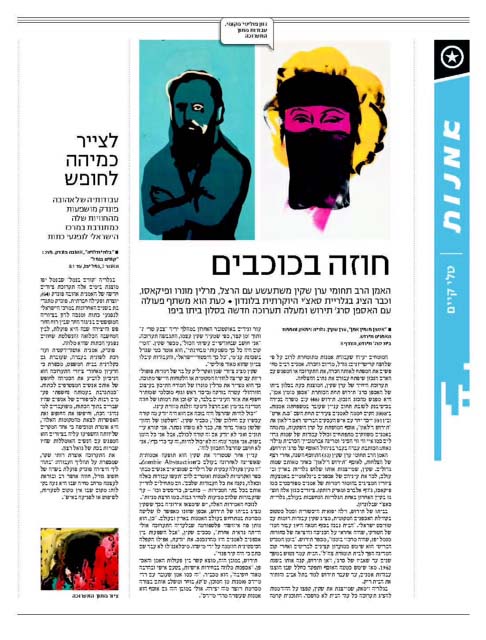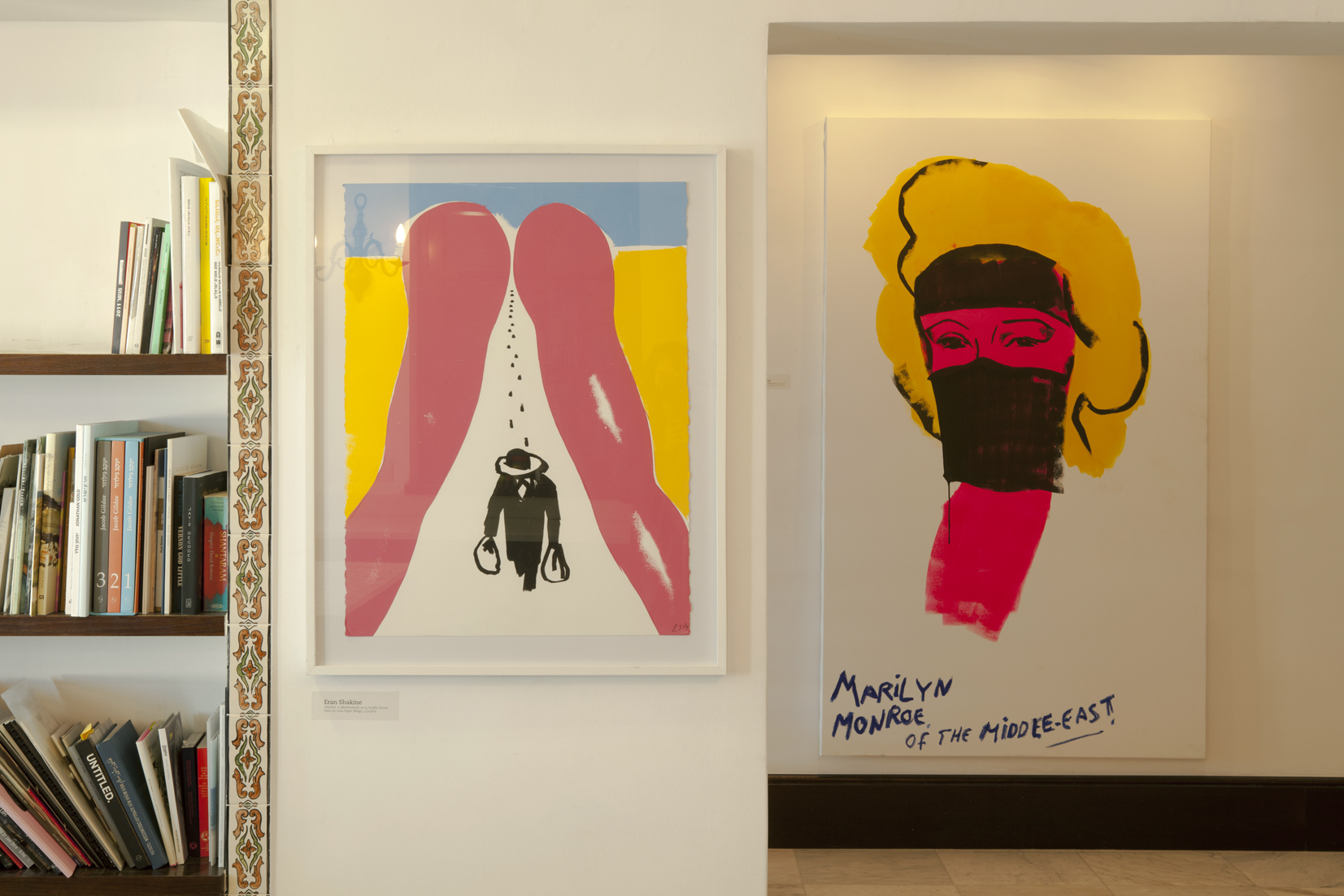

 This body of works by Eran Shakine combines two central themes in his work: canonic modern art and the symbols of Israeli Jewry. In the series The Rabbi Goes to the Sea these themes undergo formal reduction, which places them in a historical and ideational perspective touching on a broad array of cultural, artistic, and political concerns.
This body of works by Eran Shakine combines two central themes in his work: canonic modern art and the symbols of Israeli Jewry. In the series The Rabbi Goes to the Sea these themes undergo formal reduction, which places them in a historical and ideational perspective touching on a broad array of cultural, artistic, and political concerns.

The images of the forefathers of modernism, which appeared in a series of paintings from 2008 to 2010, are now replaced by a stylistic signature, a kind of formal trace transposed into the experience of Israeli-Jewish reality. The symbols of Land-of-Israel Jewry also undergo radical reduction: the skullcaps, the candlesticks, and the menorahs now give way to a lone figure, a religious man in hassidic garb carrying two bags in his hands. The Jewish signs undergo yet another transformation, from three-dimensional objects to a calligraphic sign. Thus Shakine continues his engagement with the relation between form and word, which in the works of the progenitors of modernism appeared as a title within the body of the painting, while in The Rabbi Goes to the Sea all the paintings are “Untitled.” The new connection between the modern visual form and the textual signifier silences the droll layer, which softened the critical dimension of the works of the forefathers of modernism.
So in the painting "Josef Albers Having a Sunny Side Up" (2010), Albers’ stern face, more especially his sharp and caustic look, generate the feeling that he prefers to look out to the viewer rather than at the yellow square set on the plate before him. In the United States, whither he went with his Jewish wife on the rise of the Nazis in 1933, it is served up to him as a fried egg. The yellow square, which is defined without correct perspective foreshortening, forms a stain of color, some sort of disturbance which makes Albers’ punctilious foreignness reverberate. The square recalls “yellow” in Alexander Rodchenko’s series “Last Paintings”; they are the “last” because the utopian society that was to arise on values emanating from the liberty, fraternity and equality of the French Revolution would have no further need for art. All this proceeds in step with the fading of European hegemony across the Atlantic. The pure geometrical form, with its primary values of color, is slashed through and recomposed as a Shield of David and as the generic marker of the defiled, the alien, the separate – of the “Jewish Problem.” Life, as Albers’ heavy body posture confesses, has trounced art. Albers’ body ends at the level of the middle of the ribs, in a straight line reminiscent of countless diner bars all over the United States, yet imparting to it the pose of genuflection at mass. Someone will have to pay for that, or as they say in his adoptive country, there’s no such thing as a free lunch. In "The Rabbi Goes to the Sea" the general unease in modern culture is augmented by the specific issue of Jewry in modern society, and of ultra-Orthodox Jewry in Israeli reality. The modernist obsession for surface values – line, form, color, for formal “purity” that is attained, or will be attained, only when art manages to sever its connections with things in the world, and above all the dependence on the textual.
